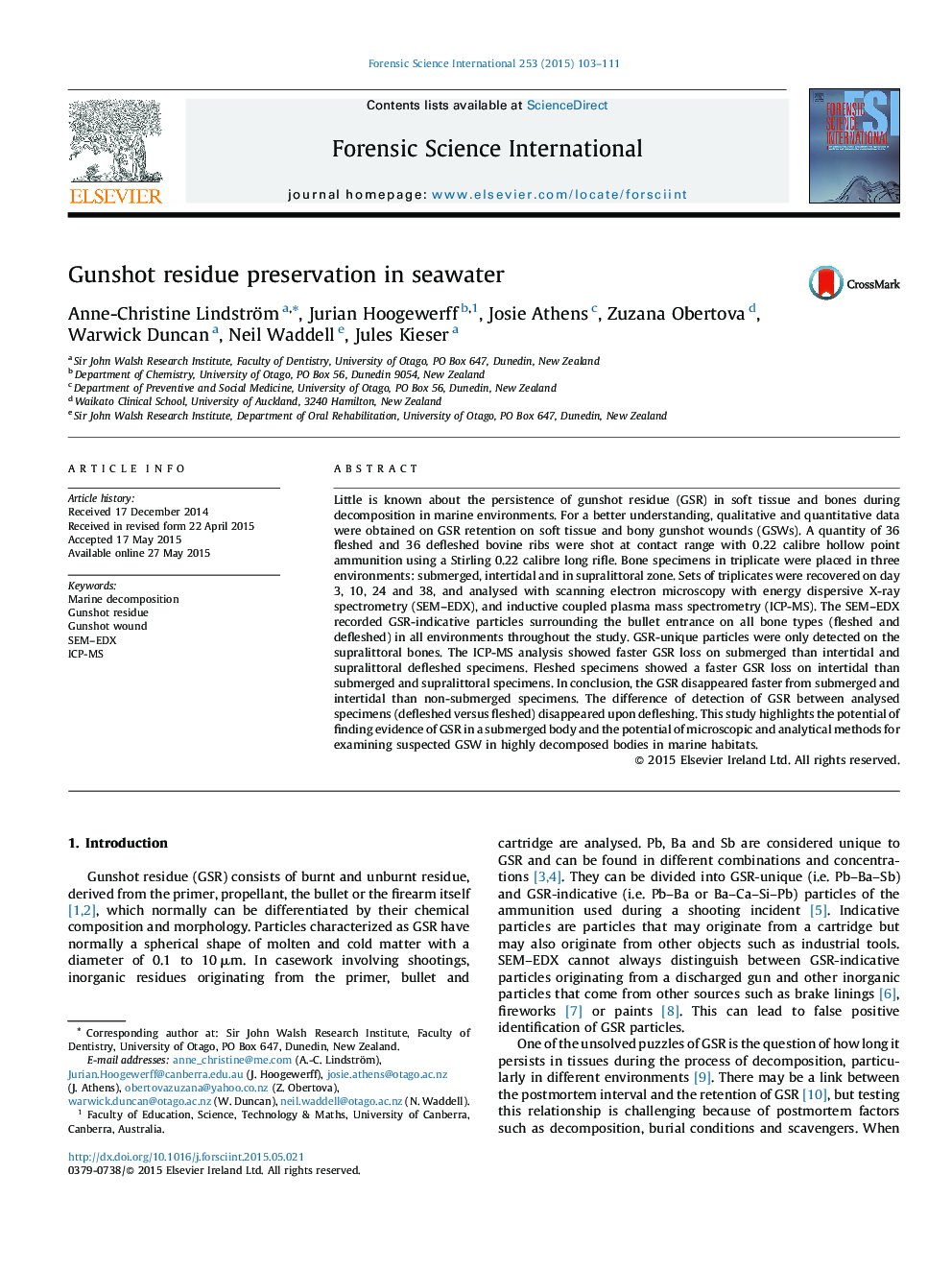| کد مقاله | کد نشریه | سال انتشار | مقاله انگلیسی | نسخه تمام متن |
|---|---|---|---|---|
| 95261 | 160423 | 2015 | 9 صفحه PDF | دانلود رایگان |
• We compare shot ribs in three marine settings that differ in their ambient habitat.
• We expected changes and differences of gunshot residue identification over time.
• Gunshot residue was lost faster upon exposure to seawater.
• Gunshot residue could still be detected after 38 days exposure to seawater.
• Difference between analysed specimens per habitat disappeared upon defleshing.
Little is known about the persistence of gunshot residue (GSR) in soft tissue and bones during decomposition in marine environments. For a better understanding, qualitative and quantitative data were obtained on GSR retention on soft tissue and bony gunshot wounds (GSWs). A quantity of 36 fleshed and 36 defleshed bovine ribs were shot at contact range with 0.22 calibre hollow point ammunition using a Stirling 0.22 calibre long rifle. Bone specimens in triplicate were placed in three environments: submerged, intertidal and in supralittoral zone. Sets of triplicates were recovered on day 3, 10, 24 and 38, and analysed with scanning electron microscopy with energy dispersive X-ray spectrometry (SEM–EDX), and inductive coupled plasma mass spectrometry (ICP-MS). The SEM–EDX recorded GSR-indicative particles surrounding the bullet entrance on all bone types (fleshed and defleshed) in all environments throughout the study. GSR-unique particles were only detected on the supralittoral bones. The ICP-MS analysis showed faster GSR loss on submerged than intertidal and supralittoral defleshed specimens. Fleshed specimens showed a faster GSR loss on intertidal than submerged and supralittoral specimens. In conclusion, the GSR disappeared faster from submerged and intertidal than non-submerged specimens. The difference of detection of GSR between analysed specimens (defleshed versus fleshed) disappeared upon defleshing. This study highlights the potential of finding evidence of GSR in a submerged body and the potential of microscopic and analytical methods for examining suspected GSW in highly decomposed bodies in marine habitats.
Journal: Forensic Science International - Volume 253, August 2015, Pages 103–111
